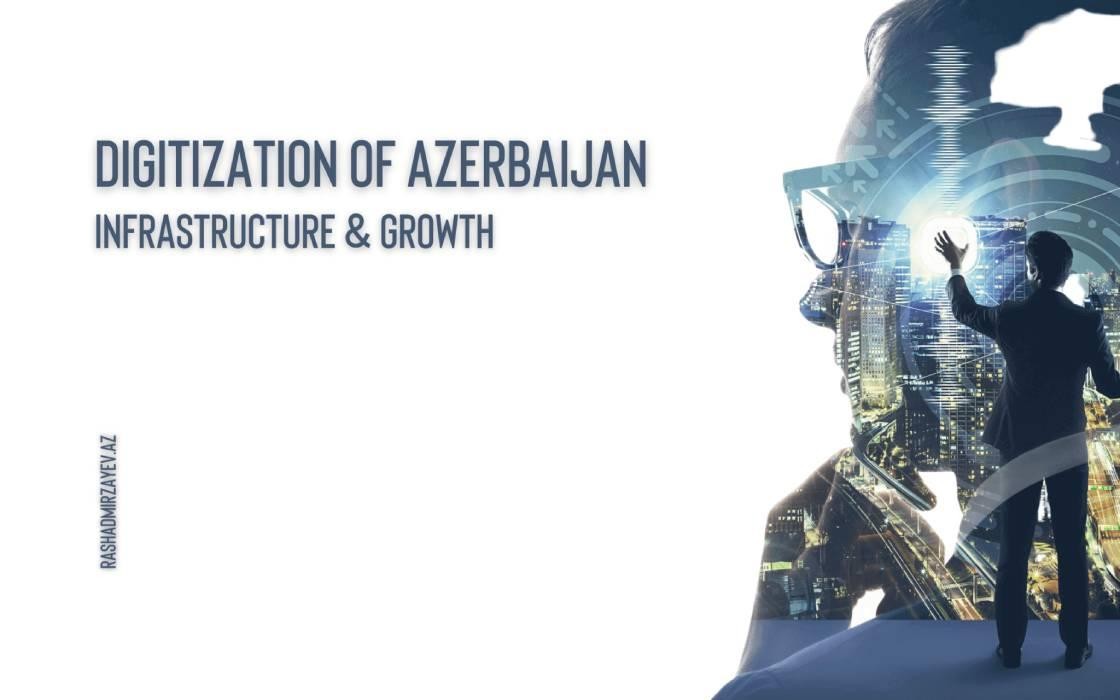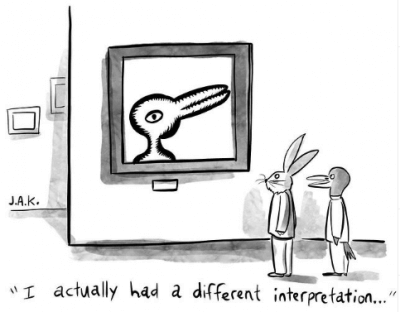Continuous scalability in modern infrastructures particularly in the realm of computing and Information Technology is fundamental in the gradual economic growth of Azerbaijan. The nation in collaboration with numerous European organizations and establishments is working toward life-changing digitization processes that will minimize the state’s reliance on naturally occurring resources.
The plan of Azerbaijan digitization process is under six infrastructural growth strategies which include telecommunication infrastructure advancement and internet connectivity scalability. Further, internet penetration, mobile internet, and fiber optic technologies are essential areas for digitization in Azerbaijan to occur.
Data centers and education access are also part of the strategies towards these advancements in the nation. How will these strategies facilitate the digitization process? Below is an elaborate list of the six pillars of digitization of Azerbaijan which include: Access to Information and Communication Technology, backbone computing Infrastructure, Broadband, Internet Use, Policy, regulatory and Market Dimensions, and mobile phone infrastructure.

According to the government of this nation, a simultaneous increase of advanced telecommunication infrastructure and growth in the Internet is evident compared to previous years. From 46% of telecom infrastructures internet presence, Azerbaijan has developed with metrics and great standards of up to 75% ICT growth in these particular domains. The statistics were recorded in 2019 according to the The Ministry of Transport, Communications and High Technologies of the Republic of Azerbaijan. However, there have been challenges which have resulted in less progress in these realms of telecom infrastructure and Internet.
For digitization to be achieved through telecom Infrastructure Internet, the administration of this post-soviet state in collaboration with The Ministry of Transport, Communications and High Technologies and European ICT organization continue to establish policies and regulation that must be adhered by individuals and companies who use telecom infrastructure internet. Ministries policies such as Information Communication and Technology Public Investment government proposals have significantly helped this digitization process in maintaining healthy private investment inflows and long-term healthy competition. The two-state-owned enterprise dominates Azerbaijan ICT sector and the introduction of regulatory bodies in ICT will facilitate further advancements of Telecom Infrastructure Internet in the quest for digitization.
Telecom infrastructure internet is the spine of Azerbaijan’s ICT supremacy. The latter comes with a cost because there must be enacted policies that inhibit negative competition in the country as far as the telecommunications field is concerned. Information Communication and Technology policymakers have profoundly advised on reforms in the sector ascendency and administration which rouse infrastructure-based competition. In particular, the fixed broadband market will be greatly affected by these policies.
In the process of Azerbaijan digitization, The Ministry of Transport, Communications, and High Technologies is mainly the most robust policy-making and regulator arm which administers or rather controls telecom infrastructure internet. Fixed telephones and mobile telephones lie under the category of telecom infrastructure internet where recent technologies in mobile telephones dominate in the markets. It draws the conclusion that if digitization efforts and policies to boost telecom infrastructure internet are adhered to ICT domain will be fully Returning for the government and its natives.
The infrastructural growth of telecom substructure and related connectivity in Azerbaijan is divided into three methodological approaches and filtered strategies to foster rapid growth. One of the approaches is strengthening Information Technology Faculties through enhancing and promoting advance governance through the liberation of markets related to telecom infrastructures through the organization of solemnly independent regulatory organs. Telecom infrastructure which is divided into wireless and wired environments is vital in determining the economy of the nation. 57.7% increase in wireless and modern communication shows actively the art of progressive digitization.
The second and quite important is equipping the future generation by promoting education related to Telecom infrastructure internet theoretical and practical which comes hand in hand with access to quality education in the online world. Digitization in these fields should as well start with the government where all public technology institutions should embrace all the policies set up by The Ministry of Transport, Communications and High Technologies Azerbaijan Intelligence. An increase in foreign telecom infrastructures and internet investors have changed the nation with fundamentals where there is a visible increase of up to 5% diversity and positive competition in the market.

In the quest of digitization in Azerbaijan, data centers are among the backbone of data assets management and administration for any ICT faculty excellence. They are centralized facilities that promote sharing of digital and Information Technology resources through procedures such as operations, storage significance, digital processing dissemination of data, and various lingering practices needed in sharing of applications. Electronic readiness alias e-readiness progressively starts from the basic establishments of data centers powered by a nation ICT faculty competence and this is part of Azerbaijan's approaches towards pure digitization. Strategic roadmaps of data centers development in the country show an increase of up to 15.1% infrastructural improvement from 2013 to 2019 thus a steady rise of technological awareness in this particular post-soviet country.
The approach used by the Azerbaijan Republic is the target to increase productivity and operation efficiency of business environments using digital amenities and algorithms such as digital data analytics and so forth. The government plans to extend data centers and related infrastructures through target gearing budgets, foreign investing individuals and companies, multilateral and bilateral partners. An increase in technological transactions has resulted in the government's top strategies on how to encompass technology-based operation in business environments which is significant for the government’s bureau of statistics in determining outcomes from certain data. Online entrepreneurs and general business personnel will use the infrastructure to boost their business in the global world of technology.
The role of data center digitization in Azerbaijan is significant for all natives of the nation in the following ways. High volume electronic commerce transactions that greatly affect all entrepreneurs will be immensely promoted. Vital in business application support in the online world, the digitization of data centers is a channel for all business practitioners to reach out to a variety and diverse clients across the globe.
Data centers are an incubation hub that holds a variety of kits to the young generation who develop interests in development in Sciences, Technology, Engineering and Mechanical (STEM) disciplines through Do It Yourself (DIY) routines. Data centers mimic technological communities where online resources are easily shared and development using different Integrated Development Environment is promoted. Environments include python, JavaScript, and so forth. The young generation is driven by virtual reality gaming and the creation of online communities. Data centers are a fundamental starter pack in establishing online gaming competencies and empowering communities of developers in the gaming environment. Modern technologies rely deeply on artificial intelligence, machine learning, and big data technologies.
Virtualization of data centers is the round-the-clock infrastructure that takes a significant role in the digitalization of data centers in Azerbaijan. The virtual Infrastructure quest is expected to support workloads on multidimensional paradigms such as multiple-cloud environments and tangible pools of infrastructures that are on-demand in the modern world. Digitization of data centers in the country will ensure that there is both infrastructural support in the virtual sphere. Security and availability of online information technology resources will be paramount in all digital parties involved. When digitization of data centers is achieved, the availability of online IT services will increase up to 99.8% from 15.1% of 2019.
E-readiness in regards to the modernization of data centers in the republic of Azerbaijan plays a significant role in various software developmental approaches which ranks Software as a Service (SaaS) and Computing Infrastructure as a Service (IaaS). The leading technological firm in the soviet state namely AzlnTelecom was established in 2015 to scale massive future technologies in collaboration with global digital platforms.
Amazon Web Service (AWS) is among the global or rather international forces which offer the same computing competencies such as cloud computing infrastructures as so forth. On the other hand, Google is a global computing hub that is easily accessible and it continues to deliver digitized data center services. To achieve digitization in the republic of Azerbaijan, being competitive with already established digital firms comes with a price of cost reduction in service related to data centers and data management.
According to the strategic Roadmap digitization of the Azerbaijan Republic, meeting the standards for data centers in the country will be pushed forward by the willingness of foreign investors in the trans-Asian communities investing in the same paradigm. The e-readiness of data centers in this particular country will attract multidimensional practices of data due to a wide range of data centers such as cloud data centers, colocation data centers, enterprise data centers, and so forth.

The digitization process is further ignited as a result of internet penetration findings and statistics. Internet Penetration can be explained as the association or rather the relationship between the number of internet users over the demographical data in a given nation. According to Azerbaijan The Ministry of Transport, Communications, and High Technologies internet penetration statistics, 78% of the natives of this country use the internet. Mobile phones and related technologies were regarded as the most active devices in the internet domain. According to internet penetration statistics done between 2019 and 2020 an increase of 2.0% of internet users was recorded making overall 80% internet user natives.
Internet Penetration holds a lot of merits in any given government. Another roadmap to digitization in Azerbaijan is the attributes related to Internet penetration. The administration of the countries aims to increase internet users which mainly increases the growth of major countries' backbone namely education. Electronic learning (e-learning) and accessibility of scholarly repositories is the modern way to offer quality education across the globe. Higher institutions are currently adapting e-learning practices thus increasing the continuous delivery of competent graduates in the world markets.
According to Azerbaijan Digital 2020, 80% of the population in the country has achieved internet penetration distributivity from home users, scholars, and higher institution companies thus shaping various industries such as the health sector. Digitization of Azerbaijan through Internet penetration will achieve medical practices such as telemedicine thus ranking the country as a global hotspot in health service supremacy. Controlling companies through the modern techniques of computing and technology can only be achieved through the Internet Penetration quest aimed by the agenda of Azerbaijan electronic-readiness.
Internet Penetration is the main drive to the growth of the internet in household and home-based settings. Digitization through the motive of Internet Penetration is aimed to improve modern urbanization through the development of techno/smart cities which increase a couple of fundamentals such as improved mobile internet adoption and increased penetration of technological awareness. As a result of internet penetration, the government’s intention is aimed towards an increase in internet dependency particularly to business consumers who use data services that are made effective by internet access. Improving the information systems in government-related organizations in Azerbaijan is the stepping stone towards achieving internet penetration. It is a strategy the government is trying to impose through a strategic digitization target to ensure an accessible social environment.
Further on ensuring digitization through internet penetration, the government promotes affordable internet infrastructure through reduced mobile data charges and boosting the broadband of the same network. Social networking and entertainment is also among the trending fields that increase internet penetration thus aching digitization. An increase of 29% social media users was recorded in 2017 where an average of 13% increase of proactive users was also recorded. This means that there were several users who continued to use the internet in reserve areas and in the home-based setting. Digitalization through internet penetration in Azerbaijan is expected to impact the economy of the nation through education and business literacy and the amount of population depending on digital entrepreneurship will rapidly increase.
As per the statistics collected by the Ministry of Transport, Communications and High Technologies of Azerbaijan, 52% of the population in the nation consists of active mobile internet users which put digitization in the country on the map of improvement. Mobile internet can be explained as internet access by means of smartphones and the overall heterogeneous mobile computing infrastructure. In the process of digitization, mobile internet holds massive significance to all stakeholders of the nation i.e. from higher education students, companies, and even government organizations. The government of the Republic of Azerbaijan through strategic targets of digitization has numerous approaches towards mobile internet digitization.
Strengthening Information Communication and technology through improved governance and non-beneficial structure is the first step towards achieving complete mobile internet digitization. How the government will achieve the latter is by introducing independent Information Technology bodies which govern and regulate public and private investors of mobile internet. The independent bodies will work towards liberating the vast mobile internet market and related domains particularly the telecommunication markets. The government has worked toward improving the mobile infrastructure experience through the profound increase of mobile infrastructure investments and funding. Modernization is steady in the nation and road map budgets have been set aside to improve to foster growth.
The dependency of natural occurring resources in the nation such as oil has slowed down ICT advancement in the nation until for the past years where digital production has been triggered due to technological advancements. Azerbaijan governments through a strategic roadmap for telecommunication and information technologies have a plan for mobile internet digitization through fostering productivity and operational efficiencies of the business environment brought about by the global adoption of online entrepreneurship. The key priorities given by the government towards mobile internet digitization include the extension of digital payment which is a key driver of the economy and particularly the growth of Azerbaijan GDP.
The mobile market of Azerbaijan holds a significant role in increasing or decreasing the demand for the internet in Azerbaijan. This market is full of various brands and businesses focused on increasing mobile and internet usage in Azerbaijan. Mainly, it includes Azercell, Bakcell, and Azerfon, who are working together in 95% of the total market.

As for the introduction of 5G in Azerbaijan, Azercell has taken the first step of trialing 5G in the mobile market for the locals in this state. However, in terms of other mobile companies and businesses in the market, others are planning on waiting for the increase in the market demand of 5G to promote 5G among the citizens more commonly. Therefore, other businesses are more focused on currently extending the reach of LTE among the locals to better carry increased data traffic for each user.
Social media highly depends on mobile internet. However, social media has become fundamental in marketing, business intelligence, and related digital entrepreneurship practices. The priorities of Azerbaijan republic through digitization strategic target is to improve technological-based operations and undertaking in business environments. The young generation which is the future of Azerbaijan's economy and social growth is equipped with modern education doctrines through government urgencies in upgrading technological education with the involvement of many economy-building sectors such as business, health, and so forth.
How will mobile internet digitization help the citizens of Azerbaijan and the globe at large? Well, there are many dockets which use mobile internet. Production faculties are highly ranked in the economy of the nation while tourism and business are ranked second in the category. Globally, there are over 450 million people using mobile internet and to link these people with the Azerbaijan economy, modern and improved mobile internet digitization is a must. Fourth and fifth-generation networks are termed as building blocks of a given economy. mobile internet digitization will focus on improving the generation of networks thus speeding the process of communication and telecommunications at large.
The statistics of January 2018 to January 2020 show an increase of internet infrastructure efficiency of 1.3% gradual growth. Computing and related technologies form the large ICT which is currently driven by modern amenities of networking such as fiber optics. Visible upgrade from the traditional networking system is taking place with the adoption of modern technologies of up to 67% in a duration of six months. Fiber Optic can be explained as a channel or a medium in the technological infrastructure which is always linked with the transmission of information as light pulses along a glass preferably known as fiber or plastic strands.

According to the strategic roadmap for telecommunication and information technologies in Azerbaijan, digitization of the nation through fiber optic heavy-duty media will be achieved through the approach of increasing productivity and operational efficiency of the business environment narrowed through the following aspects. The first approach is the process of increasing knowledge and skills in the information communication technologies sectors and the application of the same (ICT) in the education system. Internet penetration and mobile internet are among the building blocks vital in transmitting knowledge and laying education background towards ICT education.
Digitization through fiber optics is expected to improve through government priorities in promoting computing electronic systems in all institutions in the nation. E-readiness through advancements of hardware and electronic infrastructure is often vital. There are merits of fiber optic digitization that will thrive the economy of Azerbaijan which include: strengthening the bandwidth and the broadband of internet connectivity. Double activities and transactions in the region will increase due to the advanced fiber family of cables namely multimode fiber and single-mode fiber which delivers double the throughput of a given network channeling. Absolute reduction of degradation by fiber cable will bust products in many realms such as business and production domains.
Digitization of Azerbaijan through fiber optics is not only aimed at the current performances in the economy but is a stepping stone for the flexibility of the nation in the future. Scaling networks as technology advances are one merit that shows the significance of this electronic readiness in the republic. The intent of this digitization forum is to lower costs and improve productivity. The durability and reliability of fiber are unmatched which means maintainability is minimal thus Return of Investment in a vast way. Across the nation, expecting internet access in nearly all homes and households will be guaranteed with over 25 miles of signal coverage with minimal computing and electronic equipment.
The digitization of Azerbaijan through fiber optic will attract foreign investors from the trans-Asian and European communities. Government readiness towards this issue is through the establishment of independent regulatory bodies which will govern private, lateral, and multilateral investments through control policies and strategies. Continued liberation of the telecommunication market is a priority in the strategic target of Azerbaijan digitization which focuses on improving governance structures and strengthening information communication and technologies infrastructures. Fiber Optic advancement in the nation attracts faster transmission of data thus keeping the country on the map of globalization.
Education access digitization in the country mainly focuses on equitable and equal chances laid by educational institutions and policymakers to ensure digitization is achieved. The government of the Republic of Azerbaijan through a strategic road map for telecommunication and information technologies tend to digitize education access through the following routines: 1)Through increasing productivity and operational efficiency of the economy of the nation strategic target which the education system must be in line with digitization priorities of equipping learns with modern technological education. 2) Thorugh increasing knowledge and skills in the information communication and technology sector through the application of ICT in the education system
Modern education system digitization starts with equipping the scholar generations with software engineering competency to promote self-dependency and sufficiency in the digitalization of the soviet republic. Communication and Information technology must be fostered through software development nurturing which also speeds up the digitization process. The gradual process to improve the digitized education system is in line with the digitization of fiber optics which later will be distributed into educational institution infrastructure and will; improve the education system.
Introducing ICT in the education system will have resulted in the achievement of internet penetration digitization, mobile internet digitization, and the above infrastructural growth remedies. Digitizing education accessibility will hold the following signs in the nation: The promotion of collaboration in the global field and highest will be achieved. According to Google statistics, over 88% of online learning infrastructure is available in the online domain. Online repositories education continues to v be improved with over 75% global curriculum involvement. Virtual learning has proven to be significant during physical crises such as health pandemics and the collaboration of students across the globe.
Digitizing education access to greater heights is a plan by the government to encourage professional individual learning. Business practitioners are actively learning through the internet and the available digital infrastructures to improve their hubs. Upgrading technological education with the involvement of the businesses is one of the main priorities under increasing productivity and operational efficiency of the business environment’s strategic target of digitization.
Under the ministry of education through the bureau of Information communication technology aim to satisfy all the secondary schools with Information Technology infrastructure such as the supply of computing amenities including computers. Further, electronic textbooks (e-textbooks), internet accessibility, and training the tutors on the Information Technology infrastructure is a priority across the nation. The schools in remote areas will be prioritized through the current digitization forum through various government initiatives.
In the quest to achieve educational access digitization, the republic of Azerbaijan looks down up European nations’ strategies in fostering Information Technologies and coding classes in the educational system of the nation. Through these strategies, the provision of professional education through the education system aims to surpass traditional college and university competencies in delivering immutable technological knowledge. One of the procedures expecting application is equipping the schools with over 85% technological coverage. Teachers are also expected to enjoy connectivity with a coverage metric of 75%. The main internet connecting organ is the Azerbaijan Educational Network (AzEduNet). Currently, the country is under the tracks of digitizing education access where 48 of the universities in the country have access to fiber-optic internet.
To sum up, Azerbaijan’s international internet bandwidth links to neighboring countries pass through the undersea backbones. Additionally, the terrestrial backbones of the country have also become a part of the larger networks that pass through the region. This is mainly the part of the Trans-Asia-Europe fiber-optic network that stretches from Frankfurt to Shanghai. This network also stretches from the Europe-Persia Express Gateway that runs from Frankfurt to Oman.
Apart from this, what scales the international fiber-optic growth of Azerbaijan is the new fiber-optic network. This network is known as the Trans-Eurasian Information Super Highway. The better growth and improvement of this network stretches from Frankfurt to Hong Kong, China, and Shanghai. This network passes through China, Kazakhstan, Azerbaijan, Georgia, Turkey, and Germany.
Although this widespread connection of Azerbaijan is linked with many other neighboring countries, it is still one of the 70 countries that don’t have a neutral internet exchange point. Due to this reason, the reliability and cost of international bandwidth have increased a lot with the presence of exchanged local traffic abroad. This has also affected the download speeds and latency for the users and the development of local content and the government’s e-services.
Although Azerbaijan is far from having intercontinental fiber-optic submarine cable systems with limited wholesale competition, the international internet capacity of the country is also very low.
While the international connection services don’t have many chances of growth and development in the coming time, the other aspects of the digital market of Azerbaijan may be improving with time. Hence, considering the overall growth and infrastructure of the digital world/sector in Azerbaijan, the present development and future growth chances of Azerbaijan are wide.






